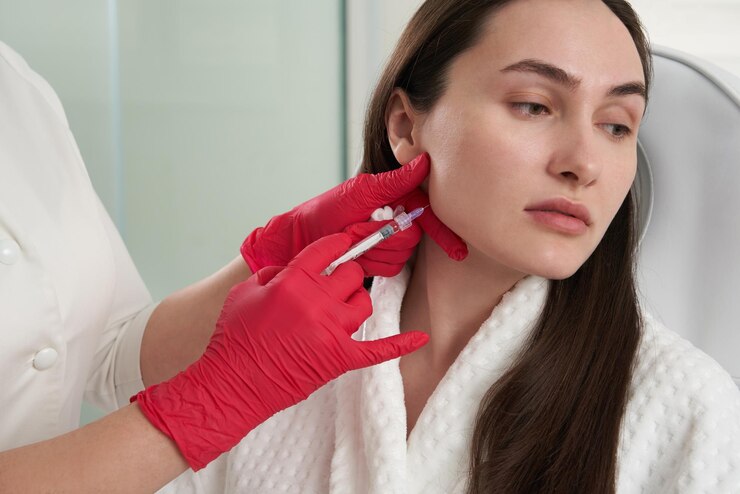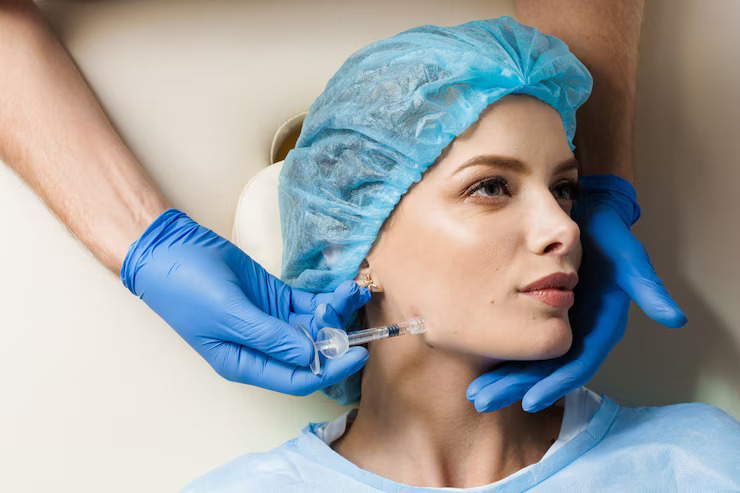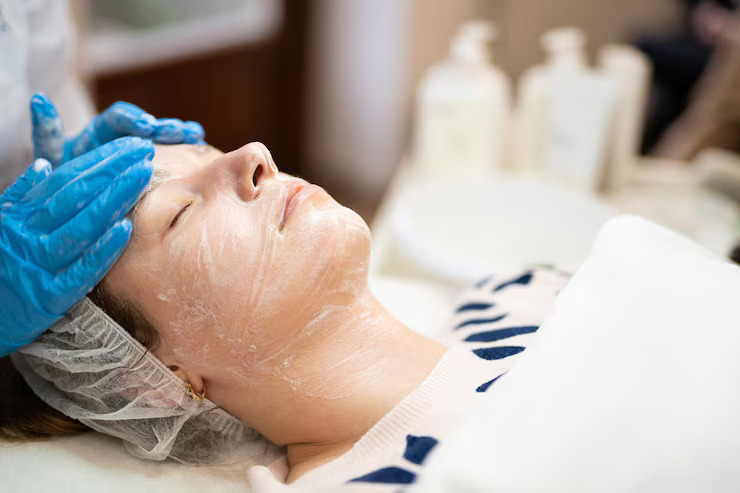At Skin and Recon, we are dedicated to delivering exceptional care and natural-looking results through advanced non-surgical treatments like Botox, Fillers, and Thread Lift.
Call Us - (00) 123 456 7891

Botox, Fillers, and Thread Lift are non-surgical treatments designed to rejuvenate and enhance your appearance without the need for invasive surgery. At Skin and Recon, we offer these innovative procedures to help you achieve a more youthful, refreshed look. Botox works by smoothing out wrinkles and fine lines, while dermal fillers restore volume and contour to areas of the face.

Botox, Fillers, and Thread Lift offer non-surgical solutions to enhance your facial features. Botox smooths wrinkles, while fillers restore volume to areas like the cheeks and lips. Thread lifts gently lift and tighten sagging skin for a youthful appearance. These treatments can be customized to address individual concerns, providing natural and refreshed results. With minimal downtime, they offer an effective way to rejuvenate your look without surgery.
Botox, Fillers, and Thread lifts are non-surgical cosmetic treatments designed to rejuvenate and enhance facial features. Botox works by temporarily relaxing targeted muscles to reduce wrinkles and expression lines. Dermal fillers add volume to areas like the cheeks, lips, and under-eyes, restoring youthful contours. Thread lifts use dissolvable sutures to subtly lift and tighten sagging skin, improving facial definition.
Botox, Fillers, and Thread Lift treatments are quick, in-office procedures typically completed within 30 to 60 minutes.
Topical numbing cream or local anesthesia is typically used to ensure comfort during these minimally invasive procedures.
Mild swelling, redness, or bruising at the injection or treatment sites may occur but usually resolves within a few days.
Potential risks include minor infection, asymmetry, lumps, or less-than-expected results, which may require touch-up treatments.

Patients can typically return to work immediately or within 24 hours after Botox, Fillers, or Thread Lift treatments. Strenuous activities should be avoided for at least one to two days to reduce the risk of swelling or bruising. It’s important not to touch or massage the treated areas during the first day, as this may affect the results. Sun exposure should be limited for a few days, and using a broad-spectrum sunscreen is recommended to protect the skin.
Here’s why we stand apart:
We’re known for delivering natural, refined results with Botox, Fillers, and Thread Lifts—combining expertise with a personalized approach.
We understand that each face is unique, and so are your aesthetic goals. Our approach to Botox, Fillers, and Thread Lifts is customized to enhance your natural beauty and achieve the results you desire.
Our clinic is equipped with the latest technologies and techniques in Botox, Fillers, and Thread Lifts, ensuring you receive the most effective and cutting-edge non-surgical treatments for facial rejuvenation.
We believe in empowering our patients with knowledge. Throughout your Botox, Filler, or Thread Lift experience, we'll guide you through the treatment process, aftercare, and tips for maintaining your youthful results.

While we specialize in non-surgical aesthetic treatments, our expertise at Skin and Recon also extends to enhancing overall facial beauty and rejuvenation. We understand that confidence comes from feeling great in your skin, which is why we offer personalized Botox, Filler, and Thread Lift treatments designed to enhance your natural features and boost your self-esteem. Our goal is to help you achieve a refreshed, youthful appearance, leaving you feeling confident in your own skin.
If you’re considering Botox, Fillers, or a Thread Lift, let Skin and Recon guide you through your aesthetic journey. Our skilled team is here to help you achieve a refreshed, youthful appearance, enhancing your natural beauty with minimal downtime and lasting results.

Most patients find the procedures relatively comfortable. Botox involves small injections that cause minimal discomfort. Fillers may cause slight discomfort, but topical numbing cream is used. Thread Lift is also performed under local anesthesia, with mild discomfort reported during the procedure.
Common side effects include mild swelling, bruising, or redness at the injection sites. Thread Lifts may cause mild soreness or swelling. Serious side effects are rare but can include infection, thread migration, or uneven results.
These treatments are minimally painful. Botox involves tiny injections that most people find tolerable, while Fillers are usually administered with numbing cream. Thread Lift is done under local anesthesia, making it a comfortable option for non-surgical lifting.
The procedures are quick. Botox and Fillers usually take around 30 minutes, while a Thread Lift may take about 45 minutes to an hour.
Botox and Fillers have minimal downtime, though some swelling or bruising may occur.
Thread Lift requires a short recovery period, with most people resuming normal activities within a few days, though strenuous exercise should be avoided for a week.
Take the first step towards reshaping your nose and boosting your confidence. Contact Skin and Recon today to schedule your rhinoplasty consultation.
Location: #255, 1st Floor, 36th Cross, 5th Main, Jayanagar, 4th Block, Bangalore, India – 560011
Contact: +91 6361417399
Mail: skinandrecon@gmail.com
At Skin and Recon, we’re not just changing noses – we’re transforming lives, one rhinoplasty at a time. Let us help you breathe easier and smile brighter with a nose that truly suits you.